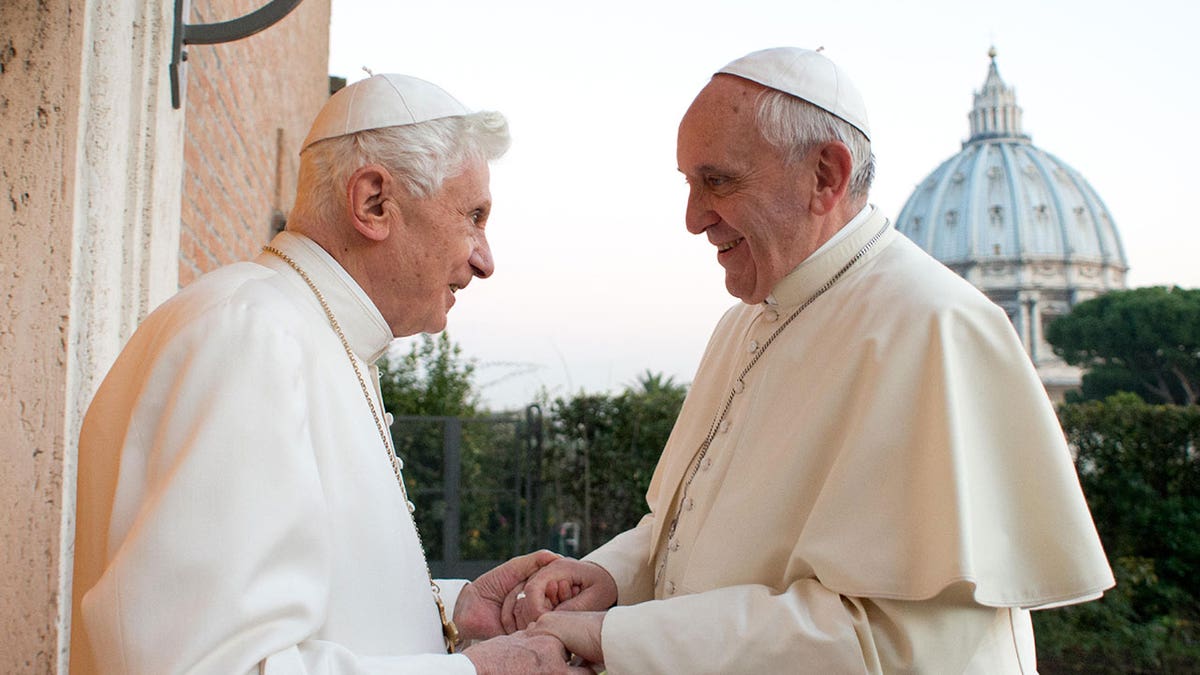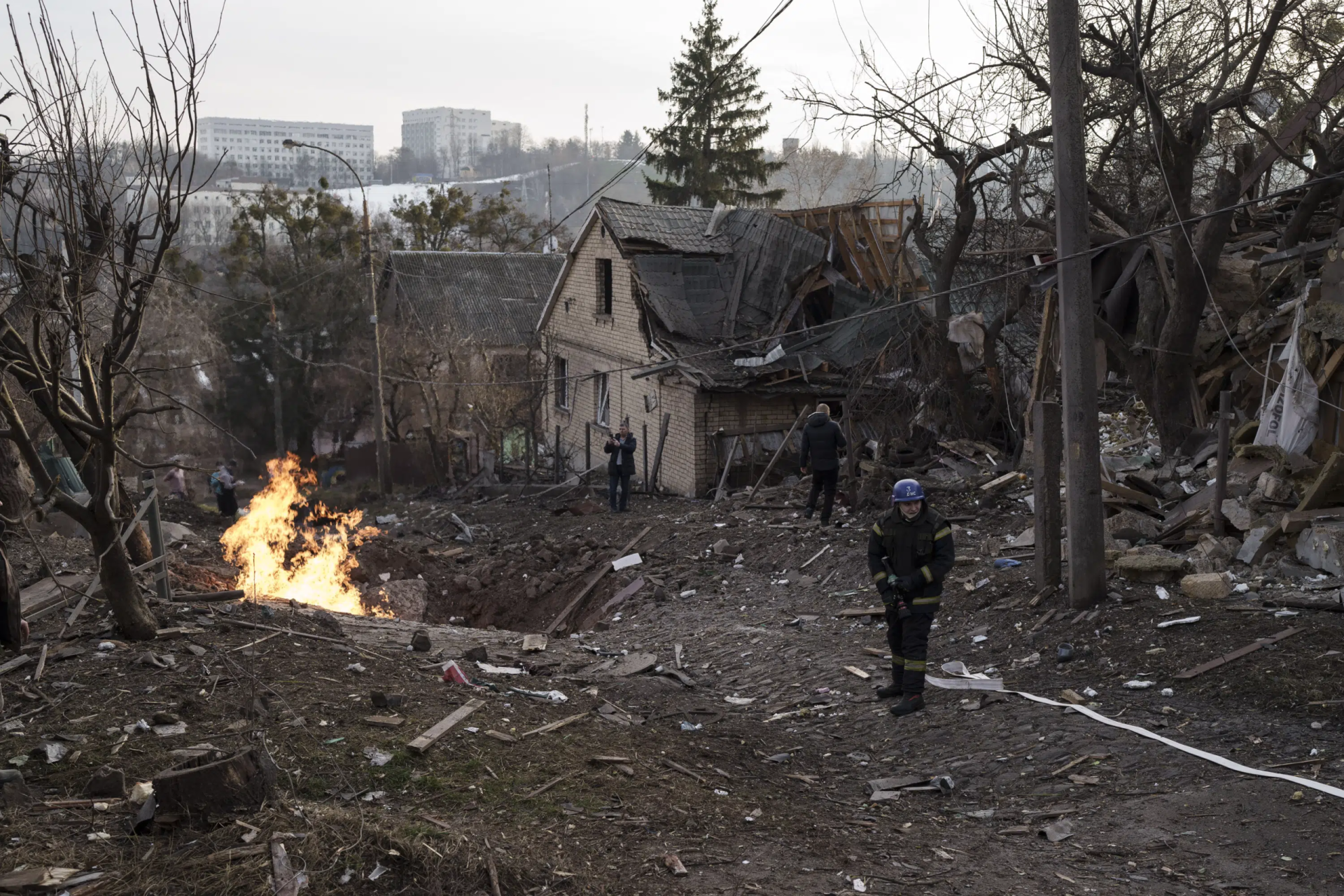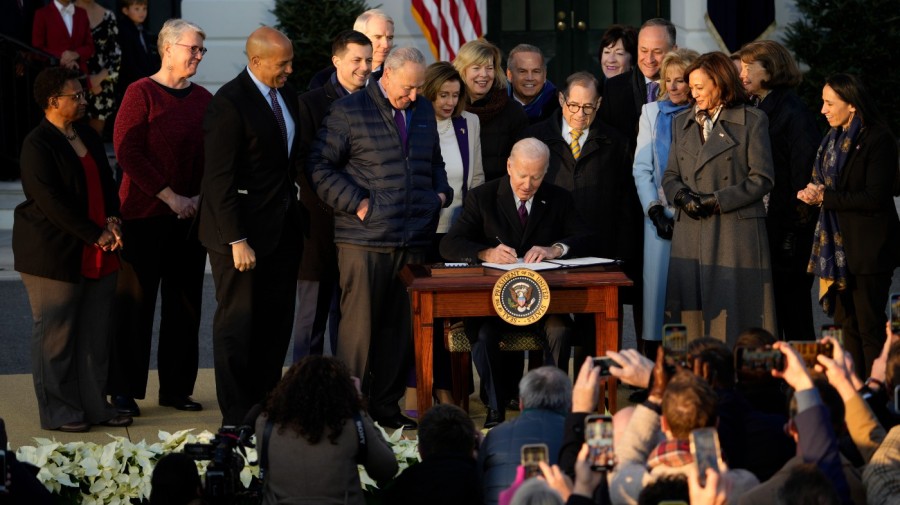Top News: US & International Top News Stories Today | AP News
TCU quarterback Max Duggan (15) dives for yardage as Michigan linebacker Junior Colson (25) defends during the first half of the Fiesta Bowl NCAA college football semifinal playoff game, Saturday, Dec. 31, 2022, in Glendale, Ariz. (AP Photo/Rick Scuteri)
GLENDALE, Ariz. (AP) — Max Duggan accounted for four touchdowns, TCU returned two interceptions for scores and the third-ranked Horned Frogs withstood a frenetic second-half surge by No. 2 Michigan to win the Fiesta Bowl 51-45 on Saturday night and advance to the College Football Playoff national championship.
TCU (13-1), the most unlikely team ever reach the four-team playoff in its nine-year history, has one more game left in its improbable season and it will come against either No. 1 Georgia or No. 4 Ohio State on Jan. 9 at Sofi Stadium in Inglewood, California.
Coming off a losing 2021 season and picked to finish seventh in the Big 12 in Sonny Dykes’ first year as coach, the Horned Frogs will try to win the program’s first national championship since 1938.
Duggan and the Frogs will no doubt be underdogs — again. That didn’t matter much against Michigan (13-1) as they took it to the big, bad Big Ten champions and turned the Fiesta Bowl into circa-2010, Big 12-style scorefest.
It was the highest scoring Fiesta Bowl ever and the second-highest scoring CFP game behind Georgia’s 54-48 Rose Bowl victory against Oklahoma on Jan. 1, 2018.
Maybe it was fitting.
TCU, the little private school from Forth Worth, Texas, that was left out of the Big 12 when it first formed in the mid-1990s, became the first team from the conference to win a CFP game and will be the first to play for a national title since Texas in 2009.
This one was 34-16 with 2:46 left in the third quarter and the Hypnotoads, a nickname borrowed for the animated TV show “Futurama,” and their purple-clad fans could sense their wild ride wasn’t over.
Of course, nothing has come easy for these Frogs all year. During their unbeaten regular season, they won seven straight games by 10 points or fewer.
What followed was five touchdown drives — with a TCU turnover tucked in between — each taking less than a minute.
Roman Wilson’s 18-yard touchdown run on a reverse and a 2-point conversion pulled Michigan within 41-38 with 14:13 left in the fourth quarter.
Back came the Frogs, unleashing their best weapon. Future first-round draft pick Quentin Johnston took a short crosser from Duggan and turned it up the sideline for a 76-yard score that put the Frogs up 10.
Duggan threw for 225 yards and two interceptions and ran for 57. Johnston had six catches for 163 yards and Emari Demercado, picking up the slack for an injured Kendre Miller, ran for 150. All of that against a defense that ranked third in the nation coming in.
TCU finally got a stop on Michigan’s next possession and turned it into a 33-yard field goal by Griffin Kell to go up 51-38 with 10:02 left.
After the Frogs and Wolverines combined for 62 points in 20 second-half minutes, the pace was throttled back. But Michigan cut the lead to six with 3:14 left on J.J. McCarthy’s 5-yard TD pass to Wilson.
McCarthy was spectacular at times with 343 yards passing, 52 rushing and three touchdowns. He also made two killer mistakes, tossing pick-sixes in each half.
TCU couldn’t ice it and Michigan got one more shot, starting from its 25 with 52 seconds left — but couldn’t get first first down.
Before TCU could line up in victory formation, there was an officials’ review for targeting on the Frogs. What was another minute or so of drama in a season filled it for TCU?
The play was clean. Duggan, the Heisman Trophy runner-up, took one last snap and a knee and the exhausted Frogs rushed the field and celebrated under cloud of purple and white confetti.
The Frogs hopped out to a 14-0 lead in the first quarter, with safety Bud Clark making two of the biggest plays of the game. First, he chased down Michigan’s Donovan Edwards to prevent a long touchdown on the very first play from scrimmage.
TCU then used a goal line stand — stymieing a Philly Special-style fourth down play by Michigan — to keep the Wolverines off the board.
On Michigan’s next possession, Clark broke fast on a throw to the sideline by McCarthy and raced 41 yards with a pick-6 that put TCU up 7-0.
Duggan completed a long touchdown drive with a 1-yard plunge with 2:27 left in the first quarter and the Frogs were up 14-0 on touchdown-favorite Wolverines.
Michigan broke the ice with a field goal and then looked as if it had flipped the game back its way.
Rod Moore picked off a tipped pass at midfield by Duggan and McCarthy went deep to Roman Wilson on the next play for what appeared to be a 51-yard touchdown pass. A review overturned the call and set up Michigan inside the 1. No problem for a team with the nation’s best offensive line, right?
Michigan ran a quick hand off to fullback Kalel Mullings, who fumbled. TCU recovered, putting down another Michigan scoring threat.
Coach Jim Harbaugh’s Wolverines put up a better showing in their second straight CFP semifinal appearances, but will lament the missed opportunities. Their first three first-and-goal situations produced three points.
Michigan fell to 1-6 in bowl games under Harbaugh.
UP NEXT
TCU: The Frogs are a combined 1-9-1 all-time against Georgia and Ohio State.
Michigan: The Wolverines open next season in the Big House against East Carolina.
___
Follow Ralph D. Russo at https://twitter.com/ralphDrussoAP and listen at http://www.appodcasts.com
___
AP college football: https://apnews.com/hub/college-football and https://twitter.com/ap_top25
















